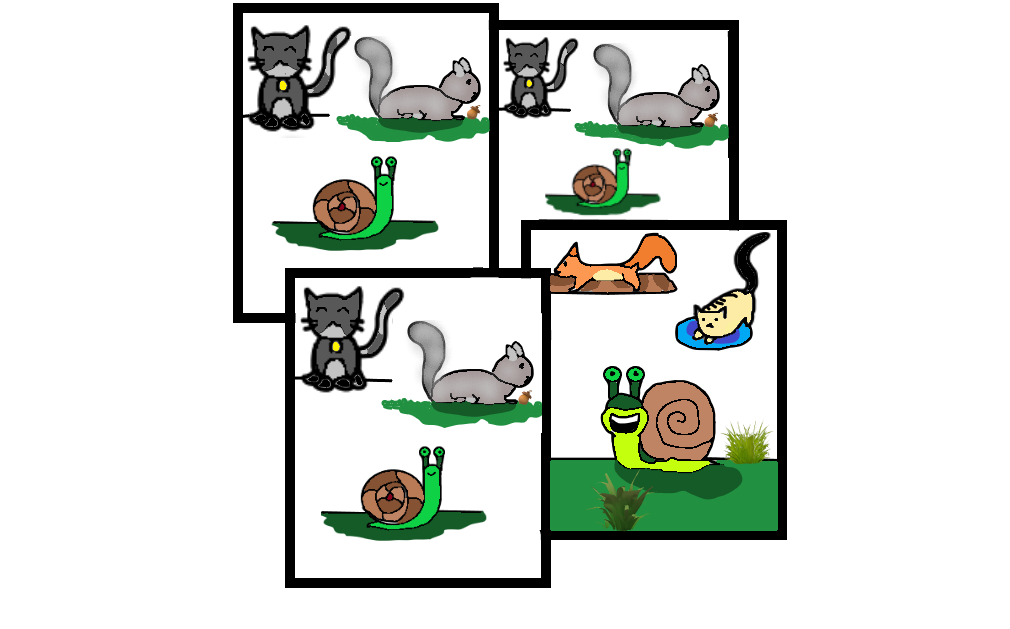Many years ago, I was in a mixed classroom of first and second standard kids. I was there to read a book. At the end of the session, I had them draw the part they liked best and then write about it in their reader response journal. I always have kids draw because it helps them add details to their writing. As the kids were not fluent in English, it helped them recall the vocabulary they needed as they formed their sentences.
I made a fascinating discovery. The drawings were the same across the board. The trees grew to the same height; the first branch was on the left, and the second on the right. They had the exact number of branches, and the canopy had the same fruits! The characters in the story, a cat, a squirrel, and a snail, looked the same in all the pictures. Out of the fifteen drawings, one stood out because everything about it was different. The trees of various heights were placed randomly on the paper, and the characters looked unlike all the other images. I still remember that the pattern on the snail’s shell looked different.
As I was eyeing the kid’s work, one of the kids spoke up. “He is new to the school, Miss. He didn’t attend the same drawing class with us. That is why he doesn’t know how to draw like us!” She had misinterpreted the reason for my fascination with the unique artist’s work! Through no fault of hers, she had imbibed the notion that a. everyone must reproduce what the teacher had taught them, and b. the class must produce identical work.
And that, my dear parents, is how we present uniformity as a value! The loss is ours when we expect that all kids should draw a tree with five branches and six fruits. Our children lose the ability to think for themselves and be self-directed in their learning. They are not allowed to be curious and learn through trial and error. Where there’s no room for diversity in thought, there is no room for innovation and creativity.
We love the catchphrase “Every child is unique.” Why, then, do we hesitate to allow our children to be different?
Children come with diverse experiences and use their knowledge to make sense of their world. That means they don’t just draw animals differently, they analyse, and problem solve in their unique ways. But when we expect uniformity, what message do we give them? Without using the actual words, we set up a sense of comparison. “I will measure your work with this yardstick-if it meets all the expectations, then it is a worthwhile attempt.” Wham! It is so easy to tell a kid that their effort is worthless!
But what if your child doesn’t want to be an engineer or doctor? What if they want to be a writer, photographer, artist, or chef? Are you willing to let your child try something different?
If we want children to be lifelong learners, then we must allow children to explore the world and form individual thoughts, ideas and reasons. And when children are given the room to express themselves, whether by adding extra squiggles to their drawing or by writing their own story, they love learning. But what happens when we force them to fit their thinking in a box created by the adult? We take away the child’s originality, that’s what. It is no wonder that so many children dislike going to school. Our need for uniformity takes away any motivation to learn.
How do we change this mindset?
Firstly, we must recognize that this rigidity in our education system fosters an unhealthy power equation. Adults control children’s thoughts, ideas, and learning in this system. Secondly, we must accept that children may respond differently based on their abilities, interest, and experiences. Their responses are valid, and the whole classroom learns from each other’s perspectives. Thirdly, alternative ways of looking at a problem provide us with new methods to solve it. In such instances, a child’s individual approach is an opportunity for the children to learn a new strategy or step.
The school atmosphere is but a reflection of what parents want or what parents think they want, especially when most of our children go to private schools of our choice. Can we take a step back and look at how we can break this need for uniformity in our homes?
When you sit with your child to do homework or for test prep, be aware of how you prompt them.
When your child sits down to write responses to a story or historical events, don’t tell them what they must write. Instead, ask them for their perspective. “What do you think? What if you were in the story? What if that happened to you? How would you feel and react? What do you want to share with your readers?“
When your child shows you their artwork, ask them to describe it and recognize the details. “Oh, I see the curved beak of the eagle!” instead of “The beak looks so big. Make it smaller.”
When your child uses a toy or object for a new purpose, comment on it, say, “Oh, that biscuit Dabba makes a good hat,” instead of, “Oh, you can’t put the Dabba on your head!”
Do you notice the common thread here? We rewire how we talk to our children. By asking them for their opinion, instead of telling them what to do, we create opportunities for children to discover what works best for their learning. But let’s not stop there.
There is a much more challenging thought for you, dear parents. One of the driving forces for this rigid expectation in our education system is the belief that we are preparing our kids for the job force. And what jobs are we talking about here? If you thought technical education or medical, you are right! But what if your child doesn’t want to be an engineer or doctor? What if they want to be a writer, photographer, artist, or chef? Are you willing to let your child try something different? Until we accept that there are many ways to make a living and lead a happy and productive life, our schools will keep churning out kids who all went to the same art class.





